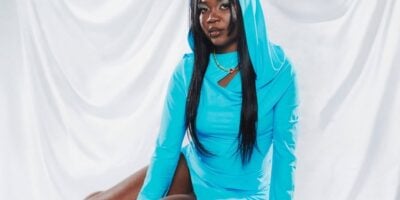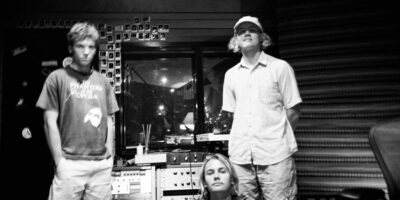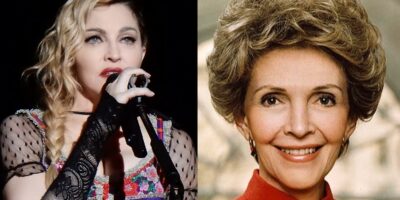Three years ago The Cult did the All Tomorrow’s Parties classic album concert thing, touring their 1985 release Love and playing its collection of theatrical post-punk bravado from start to finish. That tour went well enough that they’ll be repeating the trick, only this time with 1987’s Electric. The thing is, Electric was a very different album to Love, and deliberately so. For their first attempt at recording a follow-up they went to work in a manor house in Oxfordshire owned by Richard Branson, but the 12 songs they came up with in that genteel setting weren’t what they were looking for. The British band then flew to New York to find something else instead. For lead singer Ian Astbury – an Englishman who’d grown up in Canada – New York in the 1980s was fascinatingly grimy and dangerous.
“I mean, I walked around the corner one night after there’d been a mob hit in the street on 6th Avenue,” he recalls. “I didn’t know until I got in the studio. Someone said, ‘A guy’s been shot around the corner.’ The place where we used to get ice cream got held up; Billy Idol got arrested when we tried to cop dope in Washington Square Park. There were muggings. It was winter, it was filthy, going down Alphabet City to after-hours clubs – it was pretty exciting.”
As well as spending time with Idol, The Cult got to work with producer Rick Rubin for the first time. He’d only recently become an associate of the Def Jam label, and was hanging out with the Beastie Boys, steering that group away from their punk roots and into hip hop. “Being in New York making the record had a real incredible impact,” says Astbury. “Being around the whole Def Jam family, hanging out with people like LL Cool J and Run-D.M.C. and Slayer and Beasties. They were omnipresent, they always used to come over and hang out in the studio, so it was like a different scene in the studio every day. Strangely enough, they used to always come by when it was dinnertime,” he laughs. “Pizza boxes would be open and beers knocking around, everyone would get stuck in and then disappear. But they knew where Rick was, and everybody wanted to find Rick. Rick was in the studio 24/7. He was in the studio every day with us, which I think is a bit of a rarity now. But it was great.”
Rubin obviously didn’t want to push The Cult in the same direction as the Beastie Boys, but he did have an influence on their shift from the post-punk sound that had seen them labelled ‘goth rock’ (Astbury bristles at the words even today), and into hard rock and heavy metal revivalism. Astbury was already a fan of Led Zeppelin, Black Sabbath and especially The Doors – he’d eventually go on to join them, fronting The Doors of the 21st Century, AKA Riders on the Storm – but it was Rubin showing them American metal pioneers Blue Cheer that had the biggest impact.
“He wasn’t ‘Rick Rubin’ then,” Astbury says of the superstar producer who now works with the likes of Kanye West and Jay-Z. “He was in his dorm room when we met him. He basically showed us a Blue Cheer video, said, ‘Do you want to do this or do you want to do fluffy English alternative music?’”
They picked the former. You could mistake guitarist Billy Duffy’s riffs on Electric for Angus Young of AC/DC and songs like ‘Love Removal Machine’ were a million miles away from “fluffy English alternative music.” Their hard-edged new sound helped them break America, and Electric eventually outsold Love and was certified gold. Being big in America wasn’t just important to Astbury because of the financial rewards, but because when he’d been a kid in Canada, American culture was unavoidable. “A lot of the TV shows I was watching were broadcast from New York,” he says; “its sports teams were very dominant, the local channel was from Buffalo, New York. I mean, we had 48 channels of TV and most of it was from the States. I kind of grew up with a real strong North American influence on me, which is great. When I went back to England everybody goes, ‘Why are you talking in an American accent?’ It’s because I’ve grown up in North America!”
One of the things that made the move from rural England to Canada so formative for Astbury was that they had FM radio when it was still a rarity, and record stores you could lose yourself in. “The FM radio in the ’70s was unbelievable, because a new album would come out and they’d play the entire album, both sides. There was a record store, a shopping centre not too far from where I lived that had a record store called Sam the Record Man, which was – I’d never seen so many records in my life ’cause where I grew up, you’d go to like Woolworths or something for your records. And here I am in an actual chain store that just sells records and 8-track tapes. I spent a lot of time in there.”
During that time in Canada, Astbury’s family moved around a lot, and he attended “11 or 12 schools”. One of them he describes like something straight out of the Victorian era, a school where they still taught Latin and came down hard on anybody who was different. “I got thrown out of school when I was like 11 for having blue food colouring in my hair,” he says. “Trying to emulate, being a glam kid. It was just food colouring, it wasn’t permanent, but I got thrown out of the class immediately. And that definitely sets a boundary right there, you know? That becomes a division. I love Bowie, I get thrown out of school because I love Bowie’s music and I want to effect his look, so obviously I’m going to side with Bowie as opposed to side with school.”
Being a recent immigrant to the country as well as a bit of a troublemaker, the young Astbury had difficulty fitting in at first. “I got ostracised by most of the other white kids at school, like the landed natives, but then my peer group was all the other immigrant kids, native American kids, indigenous Canadians – my best friend was from Kingston, Jamaica [and] I had a friend from Ankora, Turkey. So that was my crew. I ran around with all the kids who were misfits, who didn’t fit in. That was a good education.”
A love of music helped to form bonds between kids from very different backgrounds who might not otherwise have had much in common. Astbury’s fonder memories of the era come from that, from the way music turned strangers into friends. “The environment was constantly shifting but what wasn’t shifting was my taste in music,” he says. “The first thing I ever bought was David Bowie, ‘Life On Mars?’, when I was like ten or something. And I’ve probably bought everything he’s ever released since, so that was a constant. The bedroom and record player was a refuge, and also a point of reference for the kids – you meet kids and say, ‘What do you listen to?’ ‘I listen to the Sex Pistols’. You go, OK, that’s instant rapport – instant bond.”
BY JODY MACGREGOR
The Cult perform Electric with support from Redcoats and Beaches at Hordern Pavilion on Friday October 4.

































